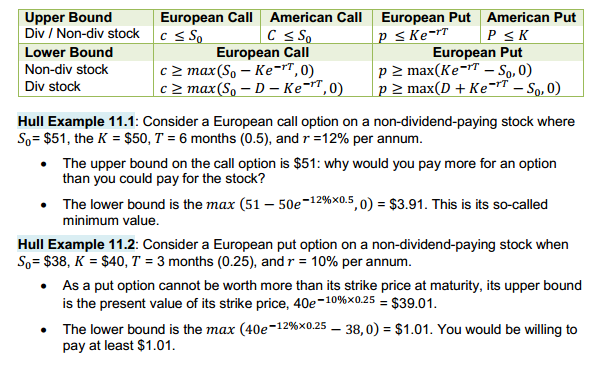gargi.adhikari
Active Member
In Reference to FIN_PRODS_DIVIDEND_PAYING_CALL_OPTION :-
Call Options are Not Exercised Early.
So, Ct = [ St - K. e EXP( -r*T) ] for Both European & American Call Options
However, Call Options are EXERCISED-EARLY when DIVIDENDS are paid - they are exercised just before the Dividend-Paying-Date. So in the case where Dividends are paid, shouldn't the
( Ct = St - K ) for American Call Options...?
Much gratitude for insights on this
Call Options are Not Exercised Early.
So, Ct = [ St - K. e EXP( -r*T) ] for Both European & American Call Options
However, Call Options are EXERCISED-EARLY when DIVIDENDS are paid - they are exercised just before the Dividend-Paying-Date. So in the case where Dividends are paid, shouldn't the
( Ct = St - K ) for American Call Options...?
Much gratitude for insights on this


 as i went out on this exploration limb!
as i went out on this exploration limb!
